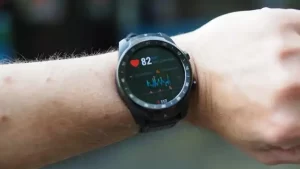What proteins can make blood vessels grow?
- Statins Lower Blood Lipids: How Long is a Course?
- Warning: Smartwatch Blood Sugar Measurement Deemed Dangerous
- Mifepristone: A Safe and Effective Abortion Option Amidst Controversy
- Asbestos Detected in Buildings Damaged in Ukraine: Analyzed by Japanese Company
- New Ocrevus Subcutaneous Injection Therapy Shows Promising Results in Multiple Sclerosis Treatmen
- Dutch Man Infected with COVID-19 for 613 Days Dies: Accumulating Over 50 Virus Mutations
What proteins can make blood vessels grow?
- Red Yeast Rice Scare Grips Japan: Over 114 Hospitalized and 5 Deaths
- Long COVID Brain Fog: Blood-Brain Barrier Damage and Persistent Inflammation
- FDA has mandated a top-level black box warning for all marketed CAR-T therapies
- Can people with high blood pressure eat peanuts?
- What is the difference between dopamine and dobutamine?
- How long can the patient live after heart stent surgery?
What proteins can make blood vessels grow? Two proteins play a key role.
Recently, scientists have made important progress in deciphering the mechanism of angiogenesis: According to a paper published in the journal “Nature Metabolism”, two proteins called YAP and TAZ play a key role in “sprouting” blood vessels, even if This is also true in cases where the metabolic resources required for angiogenesis are insufficient.


Blood vessels are found throughout the body, ensuring that organs receive the nutrients and oxygen they need. Age-related cardiovascular disease often leads to atrophy of blood vessels, while malignancies are erroneous overgrowths of blood vessels.
Wet macular degeneration is also associated with new blood vessels sprouting in the wrong places. In the worst case, the condition can lead to blindness.
Michael Potente, Professor of Translational Vascular Biomedicine at the Berlin Institutes of Health (BIH) and visiting researcher at the Max Delbrück Center for Molecular Medicine at the Helmholtz Association, said: “In order to develop targeted treatments for these diseases , we wanted to find out how exactly the growth of new blood vessels – a process called angiogenesis – is regulated in the body.”
YAP and TAZ play an important role in angiogenesis, the researchers said.
These proteins are part of the Hippo signaling pathway, which regulates organ growth and size in nearly all organisms.
If two molecules, YAP and TAZ, are active in vascular endothelial cells, the genes they read lead to increased growth of certain surface transporters.
This allows blood vessel cells to take in more nutrients that are essential for growth and cell division. The functions of YAP and TAZ are similar, so they act as a kind of “opening the door”.
This increase in nutrient absorption causes another protein called mTOR to be activated. mTOR is an important control point in cells, triggering cell growth and division. This allows new vascular networks to expand.
The finding is based on mouse experiments. The mouse retina is an ideal model for studying vascular development.
Using a strain of transgenic mice, the researchers found that endothelial cells that do not produce YAP and TAZ almost never divide, which inhibits the growth of blood vessels in the mice.
However, the research team did not yet know which signals regulate the activity of YAP and TAZ in endothelial cells. Next, the team wanted to investigate the extent to which the mechanism they describe is also involved in the regeneration and repair process of blood vessels.
What proteins can make blood vessels grow?
(source:internet, reference only)
Disclaimer of medicaltrend.org
Important Note: The information provided is for informational purposes only and should not be considered as medical advice.



